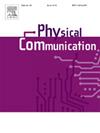DRL-based RIS-assisted Integrated Sensing and Communication Joint design of beamforming and reflection phase shift
IF 2
4区 计算机科学
Q3 ENGINEERING, ELECTRICAL & ELECTRONIC
引用次数: 0
Abstract
As one of the key application scenarios of the sixth generation of mobile communications (6G), various industries have partially researched Integrated Sensing and Communication (ISAC). ISAC can combine the functions of communications and radar to achieve the sharing of the hardware platform and unlimited radio spectrum. In the complex environment of the ISAC system, when encountering signal fading and energy loss, reconfigurable intelligent surfaces (RIS) can be used to assist ISAC communications, providing a solution for efficient communications and high-precision sensing for future 6G systems. Currently, most joint beamforming designs for RIS-assisted ISAC systems adopt traditional methods. The core idea is to achieve resource allocation and beam steering through mathematical modeling and optimization theory. This study proposes a joint beamforming design scheme using deep reinforcement learning (DRL). Based on the DRL framework, the soft actor-critic (SAC) algorithm is adopted to achieve a low-complexity scheme to solve the non-convex optimization problem in RIS-assisted ISAC systems. Simulation results show the effectiveness of the DRL-based method in RIS-assisted ISAC systems and demonstrate that the proposed algorithm can maximize the guaranteed communication rate of users while achieving perception of the surrounding environment.
基于drl的ris辅助集成传感与通信波束形成与反射相移联合设计
作为第六代移动通信(6G)的关键应用场景之一,集成传感与通信(ISAC)已在各行业进行了部分研究。ISAC可以将通信和雷达的功能结合起来,实现硬件平台的共享和无线电频谱的无限。在ISAC系统的复杂环境中,当遇到信号衰落和能量损失时,可重构智能表面(RIS)可用于辅助ISAC通信,为未来6G系统提供高效通信和高精度传感的解决方案。目前,ris辅助ISAC系统的联合波束形成设计大多采用传统方法。其核心思想是通过数学建模和优化理论实现资源分配和波束导向。本研究提出了一种使用深度强化学习(DRL)的联合波束形成设计方案。在DRL框架的基础上,采用soft actor-critic (SAC)算法,实现了ris辅助ISAC系统非凸优化问题的低复杂度方案。仿真结果表明了基于drl的方法在ris辅助ISAC系统中的有效性,并证明了该算法可以在实现对周围环境感知的同时最大限度地保证用户的通信速率。
本文章由计算机程序翻译,如有差异,请以英文原文为准。
求助全文
约1分钟内获得全文
求助全文
来源期刊

Physical Communication
ENGINEERING, ELECTRICAL & ELECTRONICTELECO-TELECOMMUNICATIONS
CiteScore
5.00
自引率
9.10%
发文量
212
审稿时长
55 days
期刊介绍:
PHYCOM: Physical Communication is an international and archival journal providing complete coverage of all topics of interest to those involved in all aspects of physical layer communications. Theoretical research contributions presenting new techniques, concepts or analyses, applied contributions reporting on experiences and experiments, and tutorials are published.
Topics of interest include but are not limited to:
Physical layer issues of Wireless Local Area Networks, WiMAX, Wireless Mesh Networks, Sensor and Ad Hoc Networks, PCS Systems; Radio access protocols and algorithms for the physical layer; Spread Spectrum Communications; Channel Modeling; Detection and Estimation; Modulation and Coding; Multiplexing and Carrier Techniques; Broadband Wireless Communications; Wireless Personal Communications; Multi-user Detection; Signal Separation and Interference rejection: Multimedia Communications over Wireless; DSP Applications to Wireless Systems; Experimental and Prototype Results; Multiple Access Techniques; Space-time Processing; Synchronization Techniques; Error Control Techniques; Cryptography; Software Radios; Tracking; Resource Allocation and Inference Management; Multi-rate and Multi-carrier Communications; Cross layer Design and Optimization; Propagation and Channel Characterization; OFDM Systems; MIMO Systems; Ultra-Wideband Communications; Cognitive Radio System Architectures; Platforms and Hardware Implementations for the Support of Cognitive, Radio Systems; Cognitive Radio Resource Management and Dynamic Spectrum Sharing.
 求助内容:
求助内容: 应助结果提醒方式:
应助结果提醒方式:


